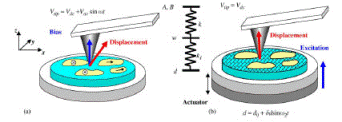Department of Physics and Astronomy: Publications and Other Research
Date of this Version
2008
Abstract
We show that after long times (24 h), individual circular domains in 50 nm thick [0 0 1] epitaxial films of ferroelectric lead zirconate titanate (PZT) develop facets due to the crystalline anisotropy, e.g. along [1 0 0] directions. This appears to be a creep process (Tybell et al. 2002 Phys. Rev. Lett. 89 097601; Paruch et al. 2006 J. Appl. Phys. 100 051608) and was first seen in a nanoarray of 180° domains (Ganpule et al. 2002 Phys. Rev. B 65 014101). The effect is independent of polarity and thus rules out any electronic dependence on different work functions for top and bottom electrodes. The phenomenon is interpreted instead as a mechanical relaxation due to highly inhomogeneous stress distributions on the nanodisks, assumed to have stress-free edges.


Comments
Published in Journal of Physics: Condensed Matter 20 (2008), 425222 (5 pp); doi 10.1088/0953-8984/20/42/425222 Copyright © 2008 IOP Publishing Ltd. Used by permission. http://stacks.iop.org/JPhysCM/20/425222